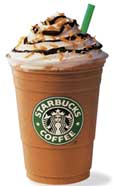
It happened not a moment too soon, as far as some food producers are concerned. Margins were—and still are—being squeezed like a lemon by the convergence of two separate trends. The retail sector was consolidating, and these newly powerful buyers were pushing hard for lower prices. Second, multinational competitors had become so big that, through economies of scale, they were producing more food more cheaply than ever, forcing prices down even more.
However, because food had become so abundant and cheap, consumers' mindsets also began to change. “How could our food be better than ordinary?” they asked their grocers. “How can we get restaurant quality at home?” Consumers had more disposable income than ever, and they already had demonstrated a willingness to pay more for quality in other industries.
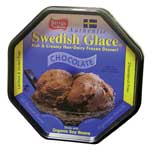
Developing the Premium Market
In the mid-1980s, auto manufacturers created numerous luxury brands, such as Acura and Lexus, to meet accelerating demand for high-end automobiles. Once unique, opulent brands such as Mercedes and BMW soon became part of a mainstream auto landscape cluttered with premium product offerings.Haagen-Dazs (a unit of Nestle Ice Cream, Glendale, Calif.) and Ben & Jerry's (South Burlington, Vt.) demonstrated the automakers' success could be duplicated in the food industry, when a multitude of consumers began to enjoy high-quality ice cream, packaged in cartons half the size and twice the price of competing brands. Starbucks, Seattle, confirmed the possibilities by convincing coffee drinkers to switch from $0.50 black coffee to $3 cups with exotic names.
Super-premium products captured an ever-expanding share of the total category through the late 1980s and 1990s, but skeptics pointed to obvious risks. Could they maintain that success when the economy took a downturn? Was consumer demand large enough to sustain a full-scale business?
Economists might agree. They like to believe that consumers are rational beings that, in uncertain economic times, shift to economy brands, causing premium product consumption to fall. However, the world is not that simple.
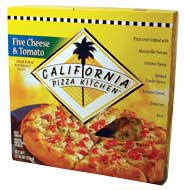
During the modest downturns experienced in recent decades, the American consumer consistently showed premium food is an affordable luxury. During the recession of 1990-1991, overall ice cream sales slowed, but Haagen-Dazs sales increased. Consumers were happy to make sacrifices so they could enjoy the occasional indulgence.
Today, the super-premium ice cream market exceeds $400 million, almost 10% of the total ice cream category. Ben & Jerry's was the only ice cream brand to increase pint volume in supermarkets in 2001, even though it cost about $2 more than non-super-premium brands. The Starbuck's chain relies almost entirely on super-premium products, and its 2002 annual sales were in excess of $3.2 billion.
Producers of other categories quickly duplicated these pioneers' early successes. However, initial attempts to market Euro-style (artisan) breads, which cost at least two to three times as much as common white pan bread, were met with limited success. In 1991, market research estimated that only about 11% of the market consisted of potential consumers of this super-premium bread. By the end of the 1990s, that demographic comprised more than 40% of the market—artisan bread makers had proliferated. Machinery had been developed that was capable of bringing automation to super-premium production, and specialty foodservice retailers such as Au Bon Pain, Boston, made the breads readily available.
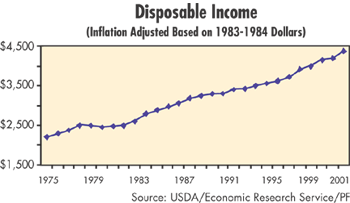
So it goes. Expensive, aged cheeses now appear on the shelves of mass merchants and club stores. Super-premium cuts of meat, such as filet mignon, are more available than ever. The market for costly organic foods is growing beyond most expectations.
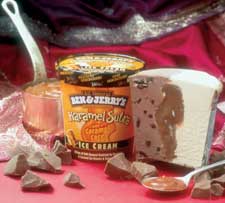
The Virtuous Circle
Observers note that many food processors are inclined to think of their products as premium or even super-premium when, in fact, they are not. This misperception can distort the company's ability to effectively sell to this consumer segment.Food falls into four basic categories—economy, value, premium and super-premium—based on their net price. The thresholds of each vary by food category, but a good rule of thumb is to compare a product's net price to that of the mainstream product (which usually represents over 50% of the product category). Value brands usually cost within 20%, either higher or lower, of that product. Economy brands generally cost less than 80% of the mainstream offering. Premium products tend to be from 20% to 100% more expensive than the mainstream. Super-premium products cost more than double the mainstream product.
This is an important distinction, because the business model for super-premium food is fundamentally different from that of all other categories.
Mainstream food processors make profit by producing large volumes of low-margin products. Successful super-premium product lines, on the other hand, currently find themselves in the midst of a virtuous circle. Because volumes of super-premium foods are generally smaller, producers need a higher margin contribution per unit in order to make the same profit as a volume producer. Specialty processors use higher-quality raw materials to justify the higher consumer price. The cost of these materials is a relatively smaller percentage of the of the total cost of the product because the incremental cost increase is offset by a even larger price premium. At the same time, the production and the sales and marketing process, once developed, are comparable in cost to the mainstream product. In other words, once the super-premium product or brand is established, processors have the opportunity to send strong profits to the bottom line.

- The product can be developed such that it can be produced relatively efficiently;
- The consumer can identify the quality of the product as, indeed, super-premium;
- The particular super-premium category is large enough to support a certain threshold of scale and level of competition;
- The processor can maintain reasonable raw material costs in order to capture the product’s value-add in profit; and
- There are barriers to entry for competitors (super-premium products tend to have more unique characteristics) and lack of awareness to the opportunity.
Website Resources
www.haagen-dazs.com— Haagen-Dazswww.benjerry.com— Ben & Jerry's
www.starbucks.com— Starbucks
www.aubonpain.com— Au Bon Pain
www.kraft.com- Kraft
Sidebar: Entering the Fourth Dimension
A fundamental rule in the food industry is that the intrinsic growth rate is equal to the growth of the number of mouths to feed. The U.S. food market has been enhanced in recent decades by a combination of the obesity gap—the amount by which the food consumption growth exceeds population growth due to the excessive dietary consumption per capita—and the waste gap, the allowance for increased waste and losses in processing.That aside, however, this fundamental rule sets the base line for food companies' strategic goals. So, how do food companies enhance their growth rates beyond that of the population?
The traditional approach to growth is to focus on the three dimensions of the food industry—product category, product type, and customer channel—and capture more shares in one of those dimensions. A company may push a current product into a new channel, pull a new product into a current channel, or design a new product type for a current product (i.e., turn a mix into a frozen ready-to-heat product). Increasingly, differentiation is being seen in a fourth dimension—quality.